Ο ισπανικός κινηματογράφος ήταν ανέκαθεν φημισμένος για την ποιότητά του. Κατά τη διάρκεια της μακρόχρονης ιστορίας του, ο μεγάλος σκηνοθέτης Λουίς Μπουνιουέλ ήταν ο πρώτος που έλαβε παγκόσμια αναγνώριση, όταν μαζί με το Σαλβαδόρ Νταλί γύρισε το σουρεαλιστικό Un Chien Andalou, το 1928. Ωστόσο, λόγω της πολιτικής απομόνωσης της χώρας, η Ισπανία δεν συμμετείχε στα ευρωπαϊκά κινηματογραφικά κινήματα, και παρέμεινε ως επί το πλείστων διακριτική.
Ο “νέος κινηματογράφος” της δεκαετίας του ’60 μας έδωσε μερικές αξέχαστες ταινίες, αλλά μόνο μετά το θάνατο του Φράνκο το 1975, ο Ισπανικός κινηματογράφος κέρδισε ανανεωμένη διεθνή αναγνώριση, με τον πιο γνωστό του εκπρόσωπο, το “τρομερό παιδί” Πέδρο Αλμοδόβαρ. Έκτοτε, μια ολόκληρη γενιά κινηματογραφιστών αναδύθηκε, η οποία συνεχώς παράγει ποιοτικό έργο, ενώ έχουν εμφανιστεί και πολλοί άλλοι νέοι και ταλαντούχοι καλλιτέχνες.
Για αυτό το άρθρο διάλεξα 15 ξεχωριστές ισπανικές ταινίες του 21ου αιώνα, οι οποίες καταδεικνύουν το ταλέντο των σύγχρονων Ισπανών σκηνοθετών. Για να υπάρχει περισσότερη ποικιλία, επέλεξα μόνο μία ταινία ανά σκηνοθέτη.
Καλή θέαση, και να μου πιείτε ποια ταινία σας άρεσε περισσότερο!
1. ΤΟ ΞΕΡΟΥΝ ΟΛΟΙ (TODOS LOS SABEN / EVERYBODY KNOWS), 2018
Η πλοκή: Μια Ισπανίδα που ζει στο Μπουένος Άιρες επιστρέφει στη γενέτειρά της προσκαλούμενη στο γάμο της αδελφής της. Αναπάντεχα γεγονότα, όμως, θα αναστατώσουν το γάμο και θα φέρουν στην επιφάνεια βαθιά θαμμένα οικογενειακά μυστικά…
Πήγαινε να τη δεις, γιατί… Είναι άλλη μια σπουδαία ταινία του Ιρανού σκηνοθέτη Ασγκάρ Φαραντί , ο οποίος επανενώνει αυτή τη φορά ένα εξαιρετικό καστ: Πενέλοπε Κρουζ, Χαβιέ Μπαρδέμ, Ρικάρντο Νταρίν, μεταξύ άλλων. “Το ξέρουν όλοι” μας προσφέρει ένα συναισθηματικό ταξίδι σε μια μικρή ισπανική κοινότητα, προκαλεί αρκετά σύγχρονα διλήμματα και αφήνει την ηθική της ιστορίας ανοιχτή στην κρίση του θεατή.
2. ΑΩΡΑΤΟΣ ΕΠΙΣΚΕΠΤΗΣ (CONTRATIEMPO / THE INVISIBLE GUEST), 2016
Η πλοκή: Ένας νεαρός επιχειρηματίας κατηγορείται για το φόνο της ερωμένης του, καθώς ξυπνά σε ένα δωμάτιο ξενοδοχείου δίπλα στο πτώμα της. Μαζί με μια κορυφαία δικηγόρο που έχει προσλάβει για να τον υπερασπιστεί, συνεργάζονται για να ανακαλύψουν τί πραγματικά συνέβη.
Πήγαινε να τη δεις, γιατί… είναι ένα εξαιρετικό αστυνομικό θρίλερ, με ένταση, δράση και ρυθμό, σκηνοθετημένο με αριστοτεχνικό τρόπο και άψογα γραμμένο από τον Καταλανό Οριόλ Πάουλο. Το έξυπνο σενάριο και οι πολλές ανατροπές, κυρίως αυτή του τέλους, είναι βέβαιο πως θα σας συγκλονίσουν!
3.ΤΡΟΥΜΑΝ (TRUMAN), 2015
Η πλοκή: Ο Χουλιάν έχει διαγνωστεί με καρκίνο σε τελικό στάδιο, και ο μόνος σύντροφος του είναι ο Τρούμαν, ο αγαπημένος του σκύλος. Όταν λάβει μια απροσδόκητη επίσκεψη από τον παιδικό του φίλο Τομάς που ζει στον Καναδά, και οι δύο άνδρες, μαζί με τον Τρούμαν, θα μοιραστούν συγκινητικές στιγμές, προσπαθώντας να αντιμετωπίσουν την κατάσταση του Χουλιάν.
Πήγαινε να τη δεις, γιατί… Ο Truman είναι μια συγκινητική, γλυκόπικρη κωμωδία / δράμα για τη φιλία, την αγάπη, την οικογένεια, αλλά και για το πώς αντιμετωπίσουμε το θάνατο. Κομψή η σκηνοθεσία του Σεσκ Γκέι, ο οποίος έγραψε και το υπέροχο σενάριο που περιέχει την τέλεια δόση εντιμότητας και ρεαλισμού. Ο Κάμαρα και ο Νταρίν είναι υπέροχοι στους ρόλους τους, παρέχοντας αβίαστο, συναισθηματικό βάθος στους χαρακτήρες τους.
4. ΕΡΩΤΑΣ ΑΛΑ ΙΣΠΑΝΙΚΑ (8 APELLIDOS VASCOS / SPANISH AFFAIR), 2014
Η πλοκή: Ο Ράφα είναι ένας Σεβιλιάνος που δεν έχει αφήσει ποτέ τη γενέτειρα του Ανδαλουσία, μέχρι που γνωρίζει την Αμάια, μια κοπέλα από την Χώρα των Βάσκων, και αποφασίζει να την ακολουθήσει στη πατρίδα της. Μια σειρά παρεξηγήσεων θα αναγκάζει τον Ράφα να υποδύεται έναν γνήσιο Βάσκο, με οκτώ βασκικά επώνυμα, ολοένα και περισσότερο εμπλεγμένος σε αυτόν τον χαρακτήρα για να κερδίζει την Αμάια.
Πήγαινε να τη δεις, γιατί… Η ρομαντική κωμωδία του Εμίλιο Μαρτίνεζ Λάζαρο ήταν φαινόμενο στην Ισπανία, και έγινε η ισπανική ταινία με την μεγαλύτερη εισπρακτική επιτυχία όλων των εποχών! Πέρα από το έξυπνο σενάριο και τους διασκεδαστικούς χαρακτήρες, η τεράστια επιτυχία της ταινίας οφείλεται αναμφίβολα στον τρόπο με τον οποίο διακωμωδεί τα διάφορα στερεότυπα και τις προκαταλήψεις που υπάρχουν μεταξύ των διαφόρων ισπανικών περιοχών, ένα πάντα επίκαιρο θέμα για τη Ισπανία. Ενδεχομένως όσοι δεν είστε εξοικειωμένοι με τις τοπικές παραδόσεις, την προφορά και την πολιτική της Ισπανίας μπορεί να χάσετε μερικά από τα αστεία, αλλά είναι σίγουρο πως όλοι σας θα απολαύσετε τις πιο ξεκαρδιστικές καταστάσεις και τα όμορφα τοπία της Χώρας των Βάσκων και της Ανδαλουσίας.
5. ΤΟ ΜΙΚΡΟ ΝΥΣΙ (LA ISLA MÍNIMA / MARSHLAND), 2014
Η πλοκή: Ισπανία, 1980, μετά τη δικτατορία του Φράνκο. Δύο αστυνομικοί της Διεύθυνσης Ανθρωποκτονιών της Μαδρίτης βρίσκονται σε μια μικρή κωμόπολη στις ελώδεις όχθες του Γουαδαλκιβίρ, για να εξιχνιάσουν την εξαφάνιση δύο έφηβων αδελφών. Και οι δύο αστυνομικοί, όσο προσπαθούν να διευθετήσουν τις ιδεολογικές τους διαφορές, διαπιστώνουν πως η υπόθεση είναι τελικά πιο πολύπλοκη και φρικτή από ότι περίμεναν…
Πήγαινε να τη δεις, γιατί… Πρόκειται για ένα ατμοσφαιρικό, πολυεπίπεδο θρίλερ, με εκπληκτική φωτογραφία και αριστοτεχνική σκηνοθεσία από τον ταλαντούχο Αλμπέρτο Ροντρίγκεζ. Η ταινία αποτελεί ένα προσεκτικό character study, και εισάγει μερικές πολιτικές πινελιές από εκείνη την ταραχώδη περίοδο της ισπανικής ιστορίας. Έλαβε 10 βραβεία Goya (τα πιο σημαντικά κινηματογραφικά βραβεία της Ισπανίας), μαζί με πολλές άλλες διακρίσεις.
6. ΑΚΟΜΑ ΚΑΙ Η ΒΡΟΧΗ (TAMBIEN LA LLUVIA / EVEN THE RAIN), 2010
Η πλοκή: Ένας σκηνοθέτης και το πλήρωμά του γυρίσουν μια αμφιλεγόμενη ταινία για τον Χριστόφορο Κολόμβο στη Βολιβία, την ίδια στιγμή που οι ντόπιοι ιθαγενείς ξεσηκώνονται ενάντια στην ιδιωτικοποίηση της ύδρευσης τους. Η παραγωγή τη ταινίας αντιμετωπίζει ολοένα και περισσότερα προβλήματα όσο οι ταραχές κλιμακώνονται, τα οποία προκαλούν ένταση ανάμεσα τους και τους οδηγούν σε μια ηθική κρίση.
Πήγαινε να τη δεις, γιατί… Με σενάριο του Paul Laverty (τακτικός συνεργάτης του Ken Loach) και την επιδέξια σκηνοθεσία της Ισιάρ Μπολαΐν (γνωστή Ισπανίδα ηθοποιός), η ταινία παρουσιάζει ένα κοινωνικό και πολιτικό γεγονός που έλαβε χώρα στη Βολιβία το 2000, γνωστό ως τον “Πόλεμο του νερού”. Με ένα εξαιρετικό καστ, που συμπεριλαμβάνει τους Λουίς Τοσάρ και Γκαέλ Γκαρσία Μπενράλ, το φιλμ κάνει τον παραλληλισμό της αντίστασης των ιθαγενών πριν από 500 χρόνια και σήμερα, και καταφέρνει όχι μόνο να μας διδάξει χωρίς δογματισμό και μεροληψία, αλλά και να μας συγκινεί και να μας ψυχαγωγεί.
7. ΚΕΛΙ 211 (CELDA 211 / CELL 211), 2009
Η πλοκή: Ο Χουάν παρουσιάζεται στη νέα του δουλειά ως σωφρονιστικός υπάλληλος μία ημέρα νωρίτερα, αφήνοντας στο σπίτι την έγκυο σύζυγό του. Όμως, κατά τη διάρκεια της επίσκεψης του στη ζώνη Υψηλής Ασφάλειας, ξεκινά μια εξέγερση και μένει παγιδευμένο μέσα στο κελί 211. Ο Χουάν πρέπει να προσποιηθεί ότι είναι ένας νέος κρατούμενος για να εγγυηθεί την ασφάλειά του, ενώ καταστρώσει ένα σχέδιο για να βγει εκτός φυλακής. Ωστόσο, η κατάσταση κλιμακώνεται και συμβαίνουν απροσδόκητες αλλαγές, τόσο εντός όσο και εκτός της φυλακής…
Πήγαινε να τη δεις, γιατί… Είναι ένα ωμό, αγωνιώδες, συναρπαστικό θρίλερ, με εκπληκτικό σενάριο και ανάπτυξη χαρακτήρων. Εξαιρετική η σκηνοθεσία του Ντάνιελ Μονσόν και κορυφαίες οι ερμηνείες των Λουίς Τοσάρ και Αλμπέρτο Αμάν. Είχε μεγάλη επιτυχία στην Ισπανία, πήρε 43 βραβεία (συμπεριλαμβανομένων 8 Βραβείων Goya) και 24 υποψηφιότητες.
8. [REC], 2007
Η πλοκή: Μια ρεπόρτερ και ένας καμεραμάν παρακολουθούν τη νυχτερινή βάρδια του πυροσβεστικού σταθμού της Βαρκελώνης. Αφού λαμβάνουν μια κλήση από μια ηλικιωμένη κυρία παγιδευμένη στο διαμέρισμά της, οι δημοσιογράφοι και οι πυροσβέστες παραμένουν παγιδευμένοι μέσα στο κτίριο, και είναι μάρτυρες ενός ασύλληπτου εφιάλτη, ο οποίος καταγράφει το τηλεοπτικό συνεργείο.
Πήγαινε να τη δεις, γιατί… Είναι μια πραγματικά τρομακτική ταινία, αλλά και μια σάτιρα των μέσων μαζικής ενημέρωσης. Θυμίσει λίγο το The Blair Witch project με το στιλ ντοκιμαντέρ που χρησιμοποιεί στις λήψεις, αλλά είναι σαφώς πιο έξυπνο και πρωτότυπο, με διαρκή αγωνία και ανατρεπτικό τέλος. Με σκηνοθεσία των Χάουμε Μπαλαγκερό και Πάκο Πλάζα, η ταινία είχε τόσο μεγάλη επιτυχία, που την ακολούθησαν ένα αμερικανικό ριμέικ, το Quarantine και τρία sequels, οι [REC]2, [REC]3 και [REC]4.
9. ΤΟ ΟΡΦΑΝΟΤΡΟΦΕΙΟ (EL ORFANATO / THE ORPHANAGE), 2007
Η πλοκή: Η Λόρα μετακομίζει με την οικογένειά της στο σπίτι όπου μεγάλωσε, το οποίο ήταν ένα ορφανοτροφείο. Μετά από λίγο καιρό, ο γιος της εξαφανίζεται και στη συνέχεια θεωρείται νεκρός. Η θλιμμένη Λόρα πιστεύει ότι ακούει πνεύματα, τα οποία ίσως προσπαθούν να την βοηθήσουν να βρει το αγόρι.
Πήγαινε να τη δεις, γιατί… Είναι μια τρομακτική και ανατριχιαστική ταινία, αλλά και πολύ συγκινητική, με έξυπνο και ανατρεπτικό σενάριο. Εξαιρετική η ερμηνεία της Μπελέν Ρουέδα, άψογη η σκηνοθεσία του Χουάν Αντόνιο Μπαγιόνα. Ήταν μεγάλη επιτυχία και έλαβε πολλαπλά εθνικά και διεθνή βραβεία, μεταξύ των οποίων 7 Βραβεία Goya.
10. Ο ΛΑΒΥΡΙΝΘΟΣ ΤΟΥ ΠΑΝΑ (EL LABERINTO DEL FAUNO / PAN’S LABERYNTH), 2006
Η πλοκή: Το 1944 στην Ισπανία, μια νεαρή κοπέλα που λατρεύει τα παραμύθια μετακομίζει με τη μητέρα και τον πατριό της, έναν αρχηγό του ισπανικού στρατού. Καθώς το κορίτσι είναι μάρτυρας της σαδιστικής βίας του πατριού της, ανακαλύπτει τον Λαβύρινθο του Πάνα, έναν μαγικό κόσμο μυθικών όντων.
Πήγαινε να τη δεις, γιατί… Θεωρείται μία από τις καλύτερες ταινίες του σύγχρονου ισπανικού κινηματογράφου, σκηνοθετημένη από τον ταλαντούχο Μεξικανό Γκιγιέρμο ντελ Τόρο. Έχει κερδίσει 99 βραβεία, συμπεριλαμβανομένων 3 Όσκαρ, και συνήθως συγκαταλέγεται ανάμεσα στις καλύτερες ταινίες όλων των εποχών, με Metascore 98! Και δικαιολογημένοι όλοι οι διθύραμβοι! “Ο λαβύρινθος του Πάνα” είναι πράγματι ένα υπέροχο, μαγικό, σκοτεινό παραμύθι, ένα διαχρονικό αριστούργημα.
11. Η ΘΑΛΑΣΣΑ ΜΕΣΑ ΜΟΥ (MAR ADENTRO / THE SEA INSIDE), 2004
Η πλοκή: Η αληθινή ιστορία του πρώην ναυτικού και συγγραφέα Ραμόν Σαμπέδρο, ο οποίος ήταν τετραπληγικός για σχεδόν τριάντα χρόνια και διεκδίκησε νομικά το δικαίωμά του στην ευθανασία. Παρά την επιθυμία του να πεθάνει, ο Ραμόν δίδαξε σε όλους το νόημα και την αξία της ζωής.
Πήγαινε να τη δεις, γιατί… Ο νεαρός σκηνοθέτης Αλεχάντρο Αμεναμπάρ είχε ήδη δείξει το ταλέντο του στις ταινίες Διδακτορική διατριβή, Άνοιξε τα μάτια και Οι άλλοι. Με την ταινία αυτή όμως, όχι μόνο απέδειξε ότι είναι ένας από τους καλύτερους Ισπανούς κινηματογραφιστές της γενιάς του (ο ίδιος ήταν σκηνοθέτης, έγραψε το σενάριο, ήταν παραγωγός και συνθέτης!) αλλά κατόρθωσε και να αντιμετωπίσει ένα πολύ ευαίσθητο θέμα με απόλυτη επιδεξιότητα και ευαισθησία. Εξαιρετικό και το καστ: Χαβιέ Μπαρδέμ, Μπελέν Ρουέδα, Λόλα Ντουένιας, το οποίο συμβάλλει να κάνει αυτή την ταινία ένα αξέχαστο κομψοτέχνημα. Η Mar adentro κέρδισε ένα Όσκαρ για την καλύτερη ξενόγλωσση ταινία, καθώς και πολλά άλλα βραβεία.
12. ΜΙΛΑ ΤΗΣ (HABLE CON ELLA / TALK TO HER), 2002
Η πλοκή: Μετά από μια τυχαία συνάντηση σε ένα θέατρο, οι Μπενίγνο και ο Μάρκο ξανασυναντώνται στην ιδιωτική κλινική όπου εργάζεται ο Μπενίγνο. Η φίλη του Μάρκο είναι ταυρομάχος η οποία έχει τραυματιστεί και βρίσκεται σε κώμα. Ο Μπενίγνο φροντίζει και την Αλίσια, μια νεαρή φοιτήτρια μπαλέτου που βρίσκεται και αυτή σε κώμα. Και οι ζωές των τεσσάρων χαρακτήρων θα οδηγηθούν προς μια αναπάντεχη μοίρα.
Πήγαινε να τη δεις, γιατί… Ο Πέδρο Αλμοδόβαρ είναι αναμφισβήτητα ο πιο γνωστός σκηνοθέτης του σύγχρονου ισπανικού σινεμά. Το ιδιαίτερο στιλ του, σαρκαστικό και πνευματώδες, καταφέρνει πάντοτε να εισχωρεί στην πιο σκοτεινή πλευρά της ανθρώπινης ψυχής. Η Μίλα της θεωρείται η καλύτερη του ταινία: είναι μια βαθιά, πολυεπίπεδη ταινία για την αγάπη, τη φιλία και την ανθρώπινη ύπαρξη. Έντονη, προκλητική και με πολύ τροφή για σκέψη … Πολυβραβευμένη παγκοσμίως, διακρίθηκε μεταξύ άλλων στα Όσκαρ, Χρυσές Σφαίρες, BAFTA και César.
13. ΔΕΥΤΕΡΕΣ ΜΕ ΛΙΑΚΑΔΑ (LOS LUNES AL SOL / MONDAYS IN THE SUN), 2002
Η πλοκή: Μια μια παρέα απολυμένων εργατών στο Βίγκο της Γαλικίας συγκεντρώνονται κάθε βράδυ στο ίδιο μπαρ που άνοιξε ένας από τους πρώην εργάτες. Και όλοι μαζί αντιμετωπίζουν την αναμονή για ένα καλύτερο μέλλον…
Πήγαινε να τη δεις, γιατί… Ο σκηνοθέτης Φερνάντο Λεόν ντε Αρανόα καταγράφει με πολύ ρεαλισμό και ευαισθησία το συναίσθημα των ανέργων που δεν έχουν οικογένεια, περιουσία, ούτε προοπτικές, χωρίς να γίνει βαρετός ή να πέσει σε συναισθηματική παγίδα. Εκτός από την άψογη σκηνοθεσία, η ταινία έχει ένα πολύ έξυπνο σενάριο και εξαιρετικές ερμηνείες από δύο από τους καλύτερους ηθοποιός της Ισπανίας: ο Χαβιέρ Μπαρδέμ και ο Λουίς Τοσάρ.
14. Η ΠΟΛΥΚΑΤΟΙΚΙΑ (LA COMUNIDAD / COMMON WEALTH), 2000
Η πλοκή: Μια μεσίτρια ανακαλύπτει τυχαία ένα θησαυρό κρυμμένο στο διαμέρισμα ενός νεκρού άνδρα. Είναι αποφασισμένη να δραπετεύσει με τα λεφτά, αλλά οι υπόλοιποι ενοικιαστές έχουν άλλα σχέδια…
Πήγαινε να τη δεις, γιατί… Ο Άλεξ ντε λα Ιγκλέσια είναι γνωστός για τις μαύρες κωμωδίες του: η ταινία του El día de la Bestia τον είχε ήδη κάνει διάσημο. Και αυτή η ταινία δεν αποτελεί εξαίρεση: πρόκειται για μια κατάμαυρη κωμωδία που αναδεικνύει τη σκοτεινότερη πλευρά της ανθρώπινης φύσης. Τι να τα κάνεις τα τέρατα, τα ζόμπι και τα κακά πνεύματα; Τίποτα δεν είναι πιο τρομακτικό από τον γείτονά μας! Ιδιαίτερο ισπανικό μαύρο χιούμορ, αξέχαστοι χαρακτήρες, κυρίως η ανεπανάληπτη Κάρμεν Μάουρα.
15. EL BOLA, 2000
Η πλοκή: Ο El Bola (“Μπίλια”) είναι ένα 12χρονο αγόρι συναισθηματικά και φυσικά κακοποιημένο από τον πατέρα του. Η άφιξη ενός νέου αγοριού στο σχολείο του θα τον εκθέτει στην αληθινή έννοια της φιλίας και της οικογένειας.
Πήγαινε να τη δεις, γιατί… Πολυβραβευμένη ταινία πάνω στο θέμα της παιδικής κακοποίησης, παρουσιασμένο με μεγάλο ρεαλισμό, αλλά κρατώντας την βία στο ελάχιστο δυνατό. Εξαιρετικές και ρεαλιστικές οι ερμηνείες που αποφεύγουν την υπερβολή, άψογη η σκηνοθεσία του Ακέρο Μάνιας, ο οποίος κέρδισε 4 βραβεία Goya με αυτήν την ταινία, συμπεριλαμβανομένης της καλύτερης ταινίας και του καλύτερου νεοεμφανιζόμενου σκηνοθέτη.
Συμφωνείτε με αυτή τη λίστα; Αναμένω τις προτάσεις σας για άλλες καλές ισπανικές ταινίες!
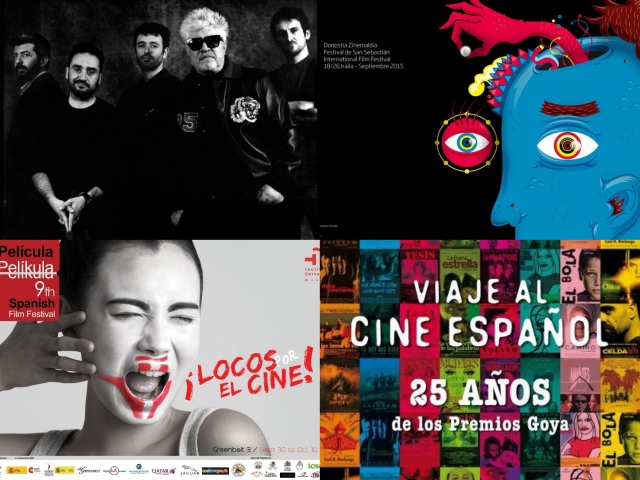
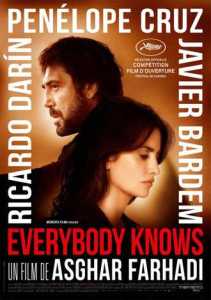

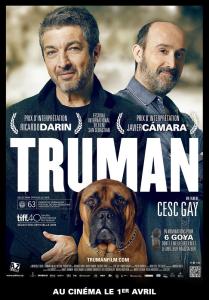




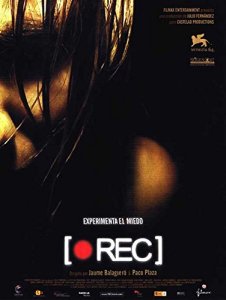





















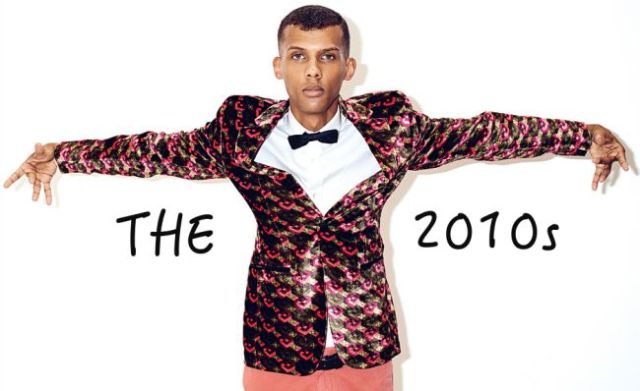

 See also:
See also: See also:
See also: